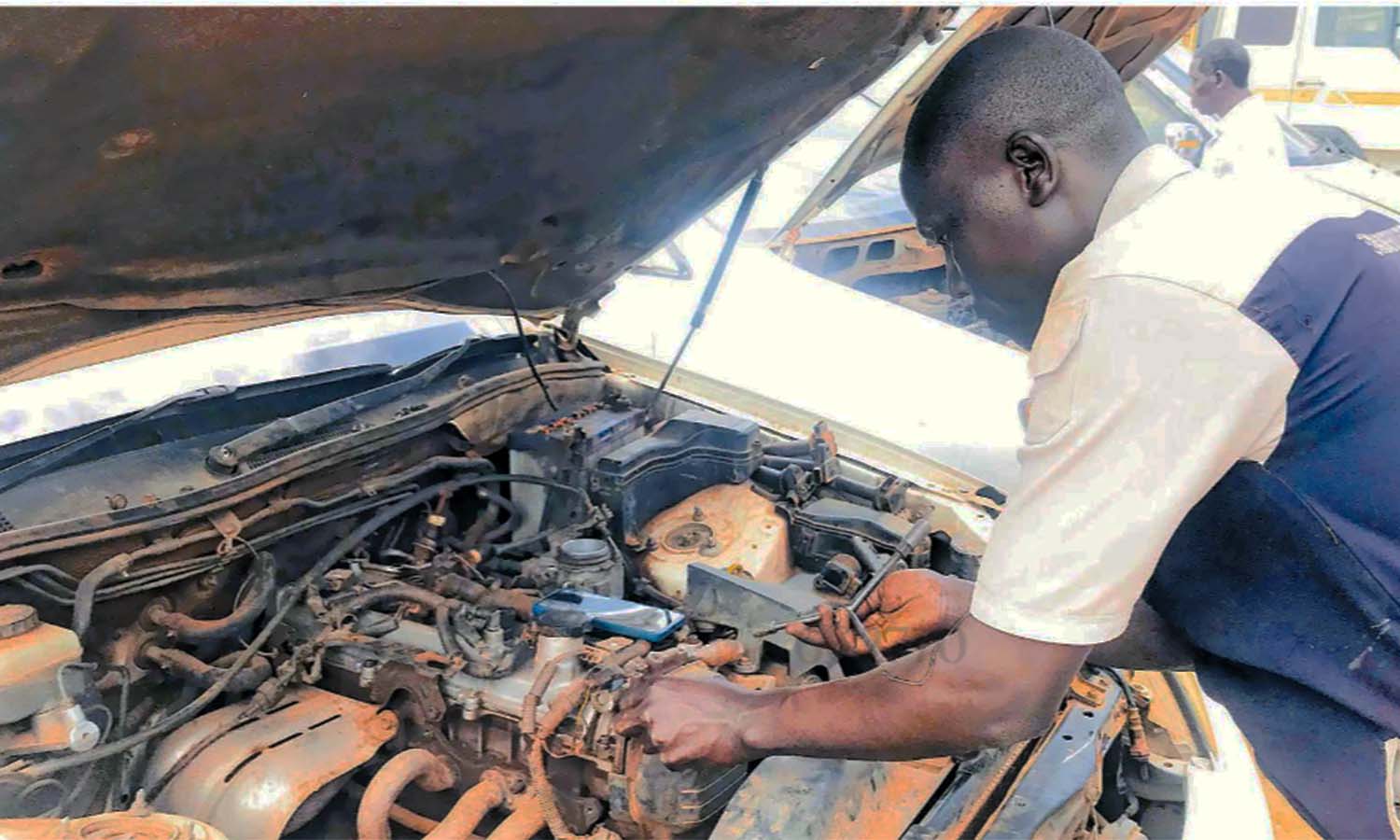Prime
More Ugandans falling into poverty - report

Shopping arcades on Luwum Street in Kampala were closed following a lockdown in a bid to combat further spread of the deadly coronavirus. The directive left many people jobless and unable to sustain their normal life.
PHOTO BY DAVID LUBOWA
KAMPALA- Nearly half the adults in Uganda couldn’t sustain their lifestyle after only one day of lockdown.
And by day 20 of the lockdown, less than 20 per cent could sustain their normal way of life.
The findings are contained in a survey launched by Financial Sector Deepening (FSD) Uganda in partnership with the Ministry of Finance, Planning, and Economic Development (MoFPED).
The survey was conducted to assess the economic resilience of Ugandans prior to the first reported case of Covid-19.
The survey noted that it is likely that two out of 10 Ugandans who receive their income daily or irregularly, and who could not work due to travel restrictions or the effects of the economic crisis experienced a 100 per cent loss in income.
Three out of four Ugandans claimed that they did not have enough money to pay for living expenses, prior to the Covid-19 crisis.
Although the lockdown is a necessary measure, the survey disclosed that over half of Ugandan adults would be unable to sustain their current lifestyle even with one day of lockdown.
The analysis in the report conducted by FSD Uganda and Altai Consulting Ltd, further discloses that at least 57 per cent would not be able to sustain their current lifestyle after just one day of lockdown and eight out of 10 people would not be able to sustain their lifestyle after 15 days of shutdown.
Low purchasing power
According to the report, Uganda is at risk of losing significant gains made in financial inclusion impacting the goals of the National Financial Inclusion Strategy (NFIS) and Financial Sector Development Strategy (FSDS).
Also of concern is that as just about Shs4, 800 is the median amount of liquid savings (cash) available to Ugandans at any given time.
These will be easily drawn down in a lockdown when income is heavily compromised, while expenditures have not reduced in equal measure.
However, an economic crisis could result in distress asset sale, meaning that people will resort to selling assets like livestock at below market value.
Depending on how long the lockdown or its effects last, there could be a draw down on savings as only 10 per cent of Ugandans use banks as their primary financial service provider, with 40 per cent of the poorest and 47 per cent of middle-income earners relying on savings groups whose operation is restricted during the lockdown.
The pandemic is not gender agnostic: It is leaving women worse-off. The report shows that women have six times less savings than men (median amount). In case of an emergency, nearly 60 per cent of women would not be able to come-up with emergency funds, compared to 50 per cent of men. Women rely on social networks and remittances more than men; both of which are heavily compromised in a pandemic.
Survival mode
The analysis noted that three million Ugandans are at survival risk and 23 per cent are at risk of losing 100 per cent of their daily income. Also three million adults mostly in urban areas are at survival risk (of particularly food and shelter).
Although the government is upbeat about agriculture, the report indicates that the sector (agriculture) is not immune, implying that there could be a lag-time before longer-term effects are witnessed.
Already, dairy farmers are facing heavy price volatility as dairy processors temporarily shut down, while tea growers are unable to export rising tea inventory in time due to slow moving cross-border trade and suppressed global demand during the pandemic, resulting in a drop in prices to as high as 40 per cent.
The survey also indicated that Uganda’s informal sector driven by trade, hotels, restaurants, manufacturing, and agriculture - which forms the primary source of livelihoods for about three million households and has a high number of inter-linkages across the economy will fair no better as it is susceptible to risks that other economic sectors are already grappling with.
On humanitarian level, the brunt on 1.2 million refugees’ will be real, considering that their economic survival has also heavily been impacted. Lockdowns prevent many refugees who depend on daily trade from earning a livelihood. This exacerbates an already troubling situation where the General Food Assistance (GFA) has already witnessed 30 per cent reduction.
Way out
As the analysis in this report shows majority of adults, especially the poorest save and lend with Saccos and other institutions that are Tier III and below. Therefore, there is a need for a deliberate strategy, and mechanisms to support non-deposit taking microfinance institutions, Sacoss, and cooperatives.
Clients of these institutions are already struggling and at risk of not paying their loans on time. Customer repayment holidays that are being granted by some of these institutions are necessary, but they will create liquidity pressures.
The pressures faced might force institutions to reduce credit -at a time when clients need it the most -resulting in a longer-lag time in the recovery of low-income earners.
These are extraordinary times, requiring extraordinary solutions and approaches. Policy makers, regulators and development partners will need to work together with various formal and informal financial institutions to ensure relief and stimulus measures are structured in a manner that not only reaches but also help the recovery of the most vulnerable.




